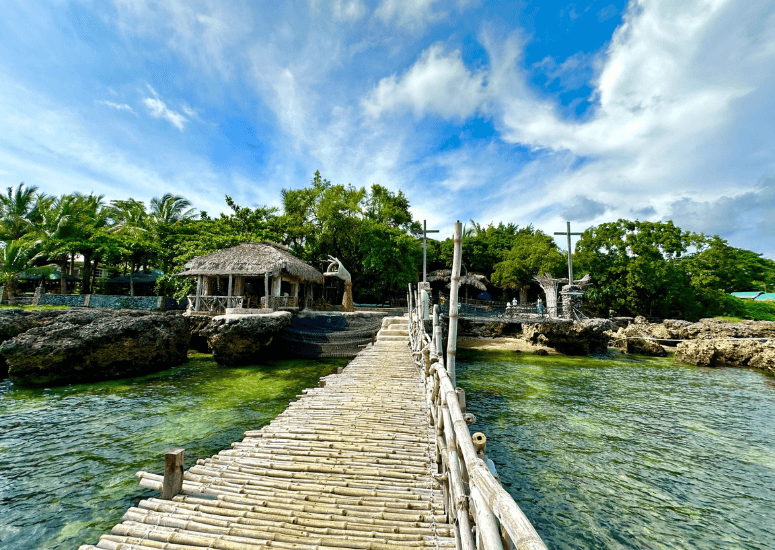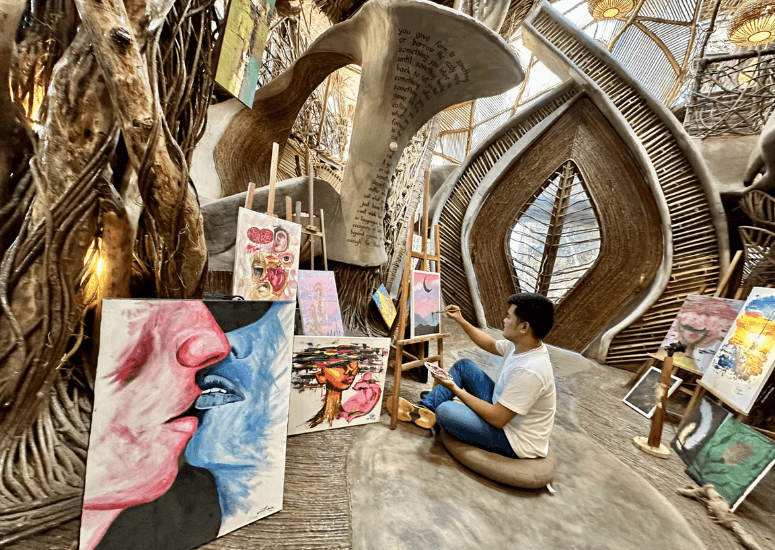This eco-art space in Ilocos Sur could be the perfect spot for digital nomads
3 min readApart from the privilege of waking up later than usual and avoiding traffic jams, working remotely has allowed employees to merge work and travel.
Based on work and travel platform Nomad List, Manila, Philippines is among the fastest-growing remote work hubs in the world, landing in the seventh spot in 2023. This year, Cebu made it to the eighth spot on the same list.
If you’re looking for new work areas that go beyond the usual cafes and co-working spaces, you might want to check out the Santiago Project by Aluminak, an eco-art resort that serves as a co-working, co-living, and co-learning space in Ilocos Sur.

Nestled in the Sabangan Cove, the Santiago Project poses itself as a “digital nomad paradise” complete with a working space as well as a relaxing view of the beach.
Ariana Singson, the founder of Aluminak who is also a digital nomad, shared that she envisioned the place as a platform for “traveling creative nomads and art makers.”
“In a mixture of relaxed resort living atmosphere and concentrated working environment surrounded with nature and organic art, we create room between work and privacy in which innovation and creativity of travelers can foster, as they co-work together with the local neighborhood creativepreneurs here,” she said.

One can recognize the place by its huge artistic face of a Filipina, which is made of vines, ropes, driftwood, and coconut trunks that perfectly blend with the picturesque view of the place. Singson shared that she collaborated with local artisans in the province, who camouflaged the reinforced concrete protection on the indigenous facade to stay intact despite the typhoons.
With an architectural design that lets the wind enter naturally into the place, the stunning spot also has restaurants, villas, community kitchens, work areas, and playgrounds that cater for kids and adults alike.
The place is also equipped with remote work essentials—from unlimited Wi-Fi access of 100MB, electrical plugs, and workstations that perfectly complement its overall theme. It also features meditation rooms, which are well positioned inside the “brain” of a face. And unlike the usual, its walls are made of cut salt crystals. “I would have wanted the walls filled with rock crystals but that would be very expensive,” added Singson.
There are also art galleries and art workshops for art lovers.
Singson recalled inviting around eight creatives from different parts of the globe to stay at Aluminak for residency for three to five months. According to her, the artists, hailing from Turkey, Lebanon, Thailand, and Canada, first studied the arts and culture in Santiago town before holding workshops in poetry reading, dance meditation, soap-making, and intuitive cooking among locals.

Beyond being a go-to space for lovers of the arts, culture, and the environment, Singson said that the project aims to give artists and creatives more opportunities to grow and showcase their talent. She is looking at expanding the Santiago Project to other areas in the Philippines soon.
Singson is also looking to bring more artists to residency next year with a separate space for them to stay and work.
“We are educating a new type of hospitality that involves business to use local culture and employ local people authentically not just for representation,” she continued.


